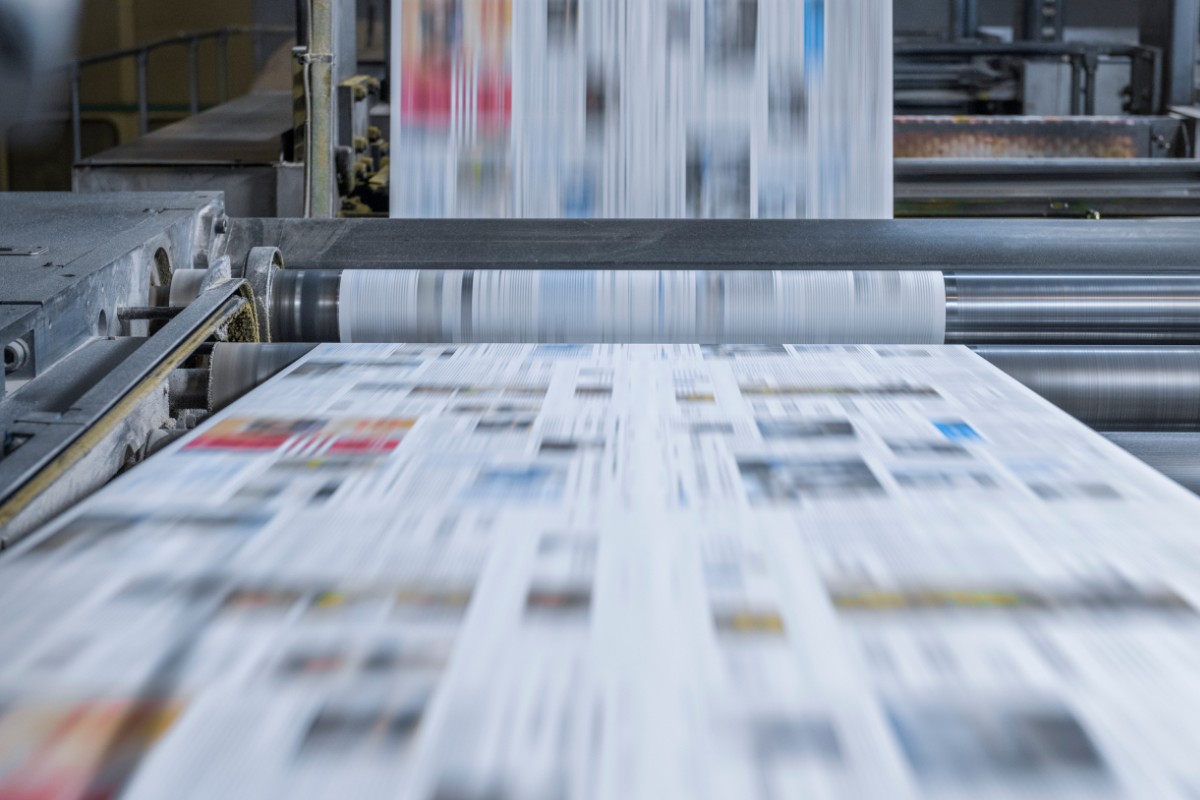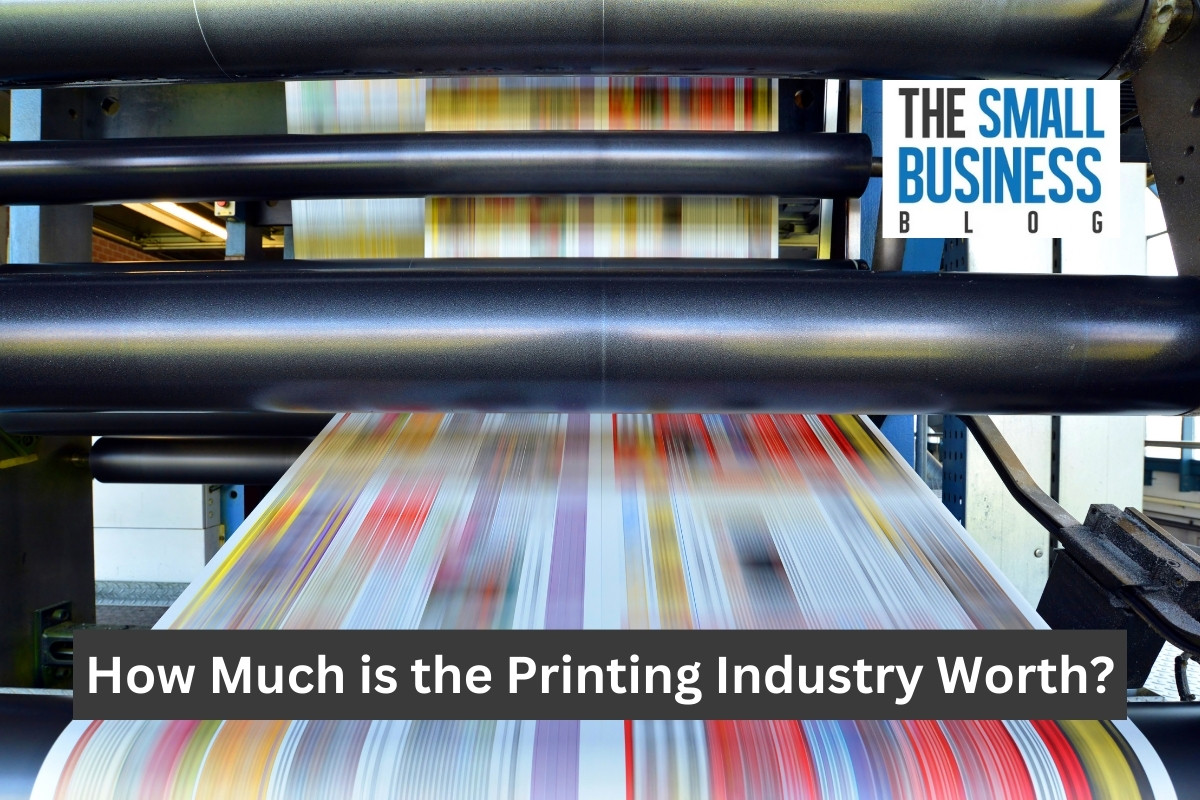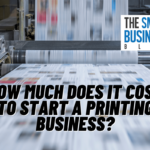The printing industry is one of the biggest in the modern world and a vital component of the economy.
Businesses and media outlets have significantly decreased their reliance on print as a result of the growth of digital goods and services.
The print sector is still thriving, though.
Print is used in almost every aspect of life, from the rising demand for commercial packaging to the enduring popularity of paper books, print advertising, on-demand print services, office papers, and the rapidly expanding 3D printing market.
Let’s examine the most recent data on printing and talk about how much the printing industry is worth, its growth rates, and some of its key trends.
Post Contents
- 1 Key Statistics
- 1.1 1. How Much is the Printing Industry Worth in 2024?
- 1.2 2. Printing industry outlook in the United States
- 1.3 3. Print book sales in the US increase by nearly USD 68 million in 2021
- 1.4 4. What are some of the types of printing industry?
- 1.5 5. In 2022, the size of the world’s commercial printing market was estimated at USD 489.63 billion
- 1.6 6. E-commerce will be a key driver for growth
- 1.7 7. By 2033, the digital textile printing market will be worth US$8.5 billion
- 1.8 8. Different printing styles
- 1.9 9. The packaging printing market globally is projected to increase 569.2 billion US dollars by 2027
- 1.10 10. All about packaging printing
- 1.11 11. Paper consumption in the US has increased from 92 million tons in 1990 to 208 million tons in 2020.
- 2 Conclusion
Key Statistics
- The global printing market was worth $330.82 billion as of 2022.
- In 2022, the size of the world’s commercial printing market was estimated at USD 489.63 billion.
- Print book sales in the US increase by nearly USD 68 million in 2021, driven by growing popularity of print-on-demand and customization.
- By 2033, the digital textile printing market will be worth US$8.5 billion and expand at a 12.2% CAGR.
- The international packaging printing marketplace is predicted to boom with the aid of using 2027 to 569.2 billion US dollars, at a compound annual growth rate (CAGR) of 6.6%.
1. How Much is the Printing Industry Worth in 2024?

Well, for those who are curious to find out how much is the printing industry worth, here is the answer: the size of the world printing market as of 2022 was $330.82 billion.
It is expected to increase to a value of $344.19 billion in 2023 at a compounding annual growth rate of 4.0%.
Moreover, the printing market is anticipated to reach $388.33 billion by 2026, at an annual growth rate of 3.1%.
The increasing demand for packaging in e-commerce is anticipated to fuel the market expansion for printing.
Since ecommerce packages are customized, it is frequently utilized by the increasing number of online retailers.
(Business Research Company)
2. Printing industry outlook in the United States
According to the latest study conducted by the Business Research Company, the United States is in the lead of the printing market.
During the third quarter of 2022, online retailers in the United States generated $265.9 billion in sales from printing products, representing a 3% increase compared to the previous period in 2022.
In contrast, overall retail sales saw a growth of 9.1%.
As a result, the printing industry is expected to contribute significantly to the market’s growth during the forecasted period.
(Business Research Company)
3. Print book sales in the US increase by nearly USD 68 million in 2021

According to a report from Grand View Research, print book sales in the United States experienced a growth of approximately 68 million USD in 2021.
This market expansion can be attributed to the increasing preference among consumers for print-on-demand services.
Print-on-demand (POD) allows customers to receive unique designs on a variety of products.
The demand for customization and personalization is on the rise, contributing to the expansion of the target market.
The same report highlights that one of the factors hindering the market’s growth during the projected period is the escalating cost of input materials such as ink, paper, pigments, and others.
Additionally, there is an expected increase in consumer adoption of digital media.
However, it is anticipated that the adoption of eco-friendly commercial printers by vendors will create attractive market opportunities.
(Grand View Research)
4. What are some of the types of printing industry?
1. Commercial Printing
A vast variety of printed items, including books, posters, catalogs, periodicals, transactional statements, and packaging, are produced by the commercial printing business.
A commercial printing business generally provides all-inclusive services like graphics, reporting, and direct ordering.
2. Packaging Printing
It means any lithographic, flexographic, or letterpress printing that results in identifying or embellishing paper, paperboard, or cardboard items intended for use as containers, enclosures, wrappings, or boxes
3. Digital Printing
Digital printing is a method of printing that can produce products of exceptional quality, such as folding cartons, flexible packaging, shrink sleeves, and labels.
However, it can be challenging to achieve a perfectly matched, smooth hue with digital printing since it uses combinations of tiny dots of ink to match particular colors.
The digital printing that is popularly used is Inkjet printing due to its quicker speeds, cheaper operating costs, and better quality.
(BDS, Law Insider, BNB Press)
5. In 2022, the size of the world’s commercial printing market was estimated at USD 489.63 billion
The global market for commercial printing was valued at USD 489.63 billion in 2022.
Looking ahead, it is projected to experience a compound annual growth rate (CAGR) of 2.8% from 2023 to 2030.
One of the primary drivers behind the increasing demand for commercial printing services is the growing need for advertising materials among businesses and corporations.
As companies seek to promote their products and services, they require a range of printed materials such as brochures, flyers, and banners.
Furthermore, advancements in printing technology have made large-scale printing more efficient and cost-effective.
This cost-effectiveness helps offset the constraints posed by digital media, ensuring that printing services remain relevant and in demand.
(Grand View Research)
6. E-commerce will be a key driver for growth
Another significant factor contributing to the expansion of the commercial printing market is the booming e-commerce industry.
With the explosive growth in online shopping, there is a corresponding surge in demand for packaging and labeling services.
As companies package and ship their products to customers worldwide, they rely on commercial printers to produce high-quality labels and packaging materials.
(Grand View Research)
7. By 2033, the digital textile printing market will be worth US$8.5 billion

The global market for digital textile printing was valued at $2,714.5 million in 2023.
It is anticipated to experience an annual growth rate of 12.2% and reach a market value of US$ 8,545.1 million by 2033.
The increasing demand for printed textiles and digital printing on fabric materials has resulted in a shift towards digital printing technology by many manufacturers.
This switch allows for faster and superior fabric printing, thus contributing to the overall expansion of the market on a global scale.
(Statista)
8. Different printing styles
Digital textile printing is a staple trend in the industry.
Equipment is priced higher compared to traditional textile printing equipment.
When we consider the overall cost of owning and operating conventional and digital textile printing systems, digital printing ends up costing about 1.5 times more than traditional printing for a single meter of fabric.
These costs include expenses for water, electricity, labor, service fees, ink, and post-treatment of the fabric.
Meanwhile, modern printing techniques, such as single-pass printing, enable faster and higher-quality printing.
This technique is more expensive than multi-pass printing because it requires a larger number of print heads to cover the entire width of the printer.
Additionally, skilled professionals are required to operate digital printing machinery safely and effectively, ensuring desired results.
(Future Marketing Insights)
9. The packaging printing market globally is projected to increase 569.2 billion US dollars by 2027
The global package printing market experienced a compound annual growth rate of 6.8%, resulting in an increase from $412.27 billion in 2022 to $440.5 billion in 2023.
For a period of time, the ongoing conflict between Russia and Ukraine had a negative impact on the potential economic recovery associated with the COVID-19 pandemic.
This was due to economic sanctions imposed on certain countries, rising commodity prices, and disruptions in the supply chain caused by the conflict.
These factors led to an inflationary effect on the prices of goods and services, affecting various markets worldwide.
As a result, it is projected that the global package printing market will reach $569.2 billion in 2027, with a CAGR of 6.6%.
10. All about packaging printing
The packaging printing market encompasses the revenue generated by companies utilizing various methods such as inkjet printing, rotogravure, lithography, and silkscreen printing.
The market value also considers the cost of any additional products that the service provider offers alongside their packaging printing services.
Printed packaging serves as an effective means to communicate the quality, visual appeal, and vital information of a product.
It involves the use of technology to package and enhance the aesthetics of packaging products.
Packaging printing plays a crucial role in promoting products and brands, capturing the attention of customers, and fostering long-lasting connections with them.
(Report Linker)
11. Paper consumption in the US has increased from 92 million tons in 1990 to 208 million tons in 2020.

The IMPACT BIZ-COM report titled “How Much Is Paper Costing Your Business?” sheds light on the undisclosed expenses associated with paper usage in businesses of all sizes.
It reveals that on average, employees print a staggering 8,874 pages annually, with a significant portion of 17% going unread.
These figures can translate into substantial financial burdens for companies, particularly those with extensive staff.
Moreover, the production of paper poses a significant environmental challenge.
According to the accompanying infographic, paper consumption in the United States has surged from 92 million tons in 1990 to a staggering 208 million tons in 2020.
This upward trend implies an average annual increase of 2% in paper consumption.
(Impact My Biz Blog)
Conclusion
The printing industry is a vast and worldwide sector.
The United States stands as the largest printing market globally.
It encompasses a diverse range of businesses, from small-scale print shops to large commercial printers.
This industry offers various printing services, including commercial printing, packaging printing, and digital printing.
All sectors within the printing industry play a crucial role in the global economy.
It employs millions of individuals and delivers a wide array of products and services that are vital for both businesses and consumers.
How much is the printing industry worth shows that the value of the printing industry fluctuates over time but is projected to increase in the coming years due to rising consumer demand and the evolving needs of businesses.






























